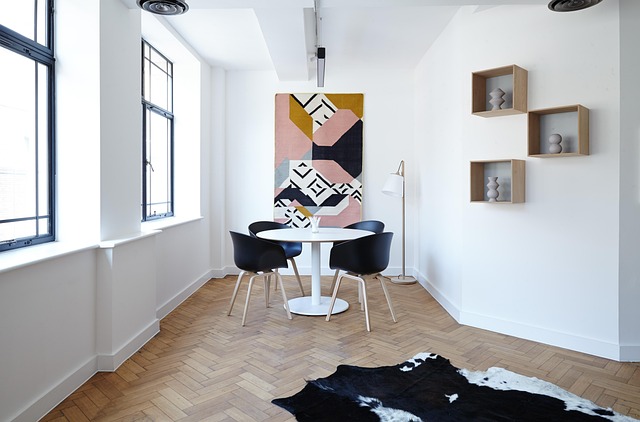When we think of a house, what often comes to mind is simply a structure made of walls, windows, and a roof. However, the significance of a house extends far beyond its physical attributes. A house is not just a shelter, but a sanctuary where countless memories are forged, relationships blossom, and life unfolds. In this article, we’ll explore the multifaceted elements that make a house a home, the various types of houses around the world, the role of design in creating a welcoming environment, and tips for making your house truly feel like home.

The Emotional Connection to Home
It’s fascinating how a house can evoke such a strong emotional response. From the moment you walk through the front door, the ambiance can influence your mood and sentiment. The laughter shared during family gatherings, the quiet moments spent with a book by the fireplace, or even the chaos of morning routines create a tapestry of experiences tied to that space. A house can reflect our personalities—whether it’s vibrant colors in the living room or a cozy reading nook filled with books.
Moreover, a house can serve as a symbol of security and stability. Especially in challenging times, having a place to call home can provide comfort and peace of mind. It’s no wonder that many people aspire to own their own house; it represents independence and accomplishment. In this sense, a house becomes more than just a building; it transforms into a cherished part of one’s identity and narrative.
Exploring Different Architectures Around the World
Around the globe, houses come in an array of styles that reflect cultural values, historical context, and local climates. From the traditional mud huts in Africa to the intricate woodcraft of Japanese homes, each type of house tells a unique story.
In Europe, you might find charming cottages with thatched roofs nestled in lush landscapes, while in the United States, contemporary designs often showcase large open spaces and large windows for natural light. The Mediterranean style boasts stucco walls and terracotta roofs, perfect for warm climates. Each architectural style not only serves practical purposes but also represents the artistry and heritage of its region.
Furthermore, an increasing trend is the rise of sustainable housing. Eco-friendly homes, built using renewable resources and energy-efficient technology, are becoming popular as awareness of environmental issues grows. These houses prioritize less impact on the environment, showing that homes can be both beautiful and responsible.
Designing Spaces: The Art of Creating Comfort
Design plays a pivotal role in transforming a house into a comfortable home. The right combination of colors, furniture, and decor can set the tone for every room. When decorating, one should consider not only aesthetics but also functionality.
Open-plan living spaces have gained popularity for their ability to foster interaction and flow between different areas. A well-arranged living room encourages family bonding, while a cozy kitchen invites culinary creativity. It’s essential to create spaces that cater to both relaxation and leisure, ensuring that every member of the household feels comfortable and at ease.
Moreover, personal touches like family photos, heirlooms, and artwork make a house uniquely yours. These items share stories and memories, enhancing the warmth of the space. Incorporating natural elements such as plants and organic materials can further enrich the environment, promoting wellness and tranquility.
Making Your House a Home: Tips for Personalization
Now that we’ve explored the emotional connection and design aspects, let’s delve into practical ways to ensure your house truly feels like home. Here are some helpful tips:
1. Declutter Regularly: A clean and organized space can significantly contribute to a calm atmosphere. Regularly assessing belongings and eliminating unnecessary items helps maintain a harmonious environment.
2. Infuse Personality: Don’t shy away from expressing yourself through decor. Choose colors, textures, and artworks that resonate with you. Mix modern with vintage, and don’t be afraid to experiment until it feels right.
3. Create Cozy Corners: Designate spaces for specific activities such as reading, meditating, or enjoying coffee. Use comfortable furniture, soft pillows, and proper lighting to enhance these areas.
4. Invite Nature Inside: Incorporating plants not only beautifies your home but also improves air quality. Whether it’s succulents, ferns, or even a small herb garden in the kitchen, nature’s touch can invigorate your living space.
5. Celebrate Traditions: Incorporate family traditions into your home life, be it through holiday decorations or regular family dinners. These rituals create memorable experiences and strengthen bonds.
6. Stay Connected with Neighbors: Building relationships within your community can enhance your sense of belonging. Having friendly conversations or hosting gatherings fosters a welcoming atmosphere.
Conclusion: More Than Just a Structure
Ultimately, a house is much more than bricks and mortar; it is a living entity that evolves as its inhabitants grow and change. It holds the weight of dreams, aspirations, and life’s journey. By recognizing the emotional and cultural significance of our homes, embracing thoughtful design, and personalizing our spaces, we can nourish our connection to our houses.
Every room, every corner, and every detail contributes to the unique story of your home. As you embark on the journey of making your house a true home, remember that it’s about creating a space where memories flourish, comfort prevails, and love resides. So, take a moment to appreciate your house—not just as a shelter, but as a heartfelt expression of who you are.